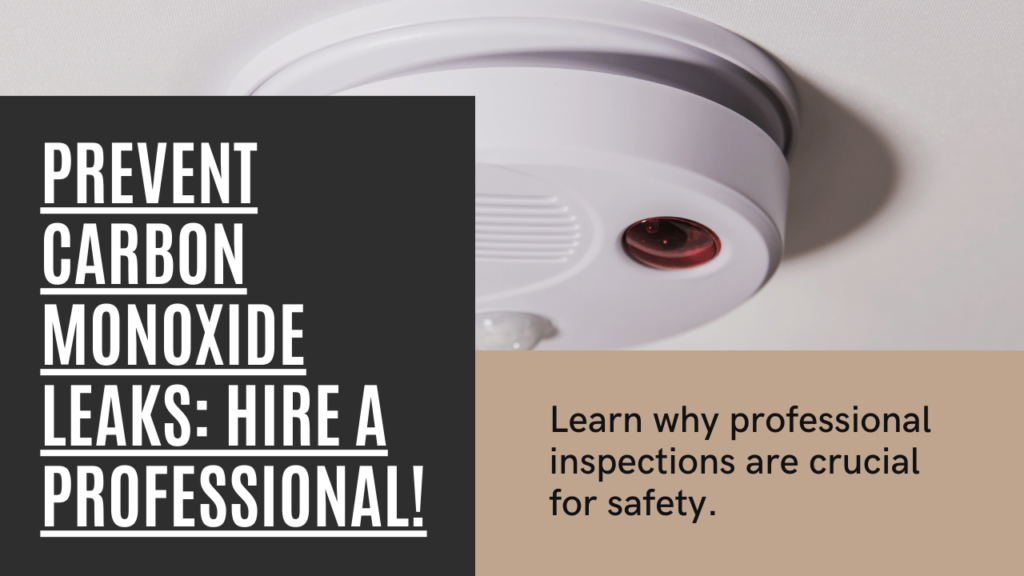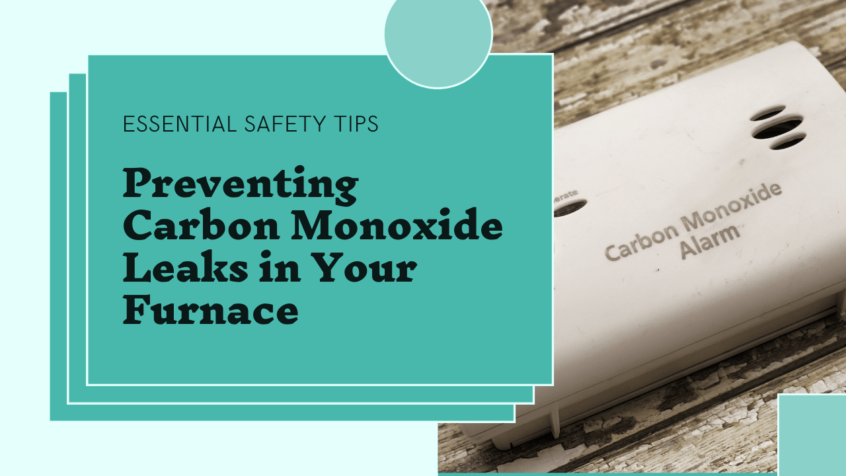Carbon monoxide (CO) is a colorless, tasteless, odorless, toxic gas that may originate from a faulty furnace or other appliance that uses fuel. Carbon monoxide is poisonous and can be fatal when breathed in, which means measures should be put in place to prevent CO leaks.”
Inspect Your Furnace Regularly
– The recommendation is to have the furnace inspected by a professional at least once yearly. A technician will inspect the heat exchanger, exhaust system, and other parts with a possibility of leaking CO and look for cracks or damage.
– Furnace visually should be inspected on the owner’s part once a month, while replacing air filters. Visually inspect and check for symptoms such as soot around the unit, rust-colored sections, or anything that does not glow blue. Any of these could be an indication that there is a problem.

– If your furnace is 15-20 years old, it is high time for you to replace it. It is a fact that older models are more likely to develop CO leaks than recently manufactured cars. New high-efficiency models are safer than older low-efficiency models.
Ensure Proper Ventilation
– Check that there are no obstacles that can obstruct the furnace exhaust or intake vents on the outside. They include snow and leaves in the chimneys and other debris that may result in back-drafting, which is very dangerous.
– Check the ductwork for any signs of separation or a gap through which CO can be released into the living area. Possible indications of this could be the inability to cook due to higher heating bills.
– Make sure that doors to furnaces closet are opened to allow sufficient air circulation. Closed doorways trap CO.
Use and Maintain Detectors
– Mount CO detectors on each level of the home as per the manufacturer’s instructions for safe use. Select models of the ventilators which have digital displays and buttons for testing.
– CO detectors should have their batteries checked every month and replaced every six months. The test detectors can be initiated through the test button.
– CO detectors must be replaced every 5-7 years or based on the manufacture date as recommended. Older detectors lose sensitivity.
Make Smart Lifestyle Choices
– In particular, never leave parked cars in attached garages, even if the garage door is open. CO found in exhaust, which enters the home.
– It is hazardous to use gas ranges, ovens, or dryers for supplementary heating. This will ensure that proper heating equipment iswith the necessary venting systems for safety are used.
– Charcoal or fuel-fired grills should not be used inside, in enclosed areas like a garage, or on balconies. These release deadly CO.
Hire Professional Help
– It is recommended to perform annual check-ups of the heating system by a licensed HVAC technician before the start of the heating season. They will look for any signs of issues and remedy simple faults while ensuring your furnace is safe.

– Regulations should be put in place that restricts the operations of furnace installation, repair, or replacement, and exhaust parts to licensed personnel only. This may cause leakage of CO especially where improper modifications of the structures have been made.
– You should seek advice from others if your home has rust, moisture, mold, or any problems concerning ventilation. These can open ways for CO to penetrate the living areas.
React Safely if an Alarm Sounds
– CO detector should be indicated to sound, and the residents should evacuate the home, and call emergency services. Do not ignore alarms.
– Know how many persons could be affected and seek medical attention immediately. It is highly hazardous and the longer a person is exposed the worse the effects of the exposure.
– It is advised not to go back into the house until the personnel responding to the emergency signal clear the compound. One should then call a furnace professional to check the problem and repair it before people re-enter the building.
Conclusion
Indeed, the avoidance of CO leakage can be achieved through; Check-ups, creditable lifestyle changes and consultation from experts where necessary. Adhering to these measures can assist in preventing this unseen enemy from striking before it has the chance to attack. CO safety is an essential issue that all property owners should consider in a house with a furnace or a combustion appliances. The fire alarm is an essential tool in these life-threatening occurrences, and catching the leak early and learning appropriate procedures after getting the alarm is the best-case scenario in such cases. As a result, extending attention to the use of detectors and immediate action in case of alarms, the dangers of CO can be minimized.

